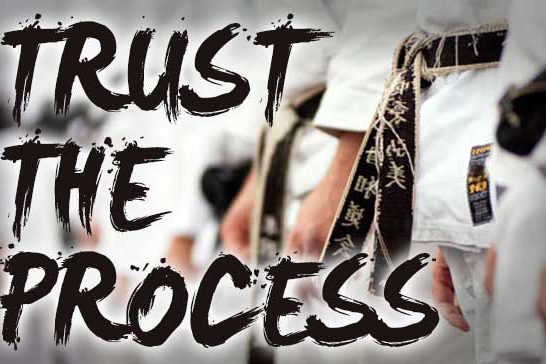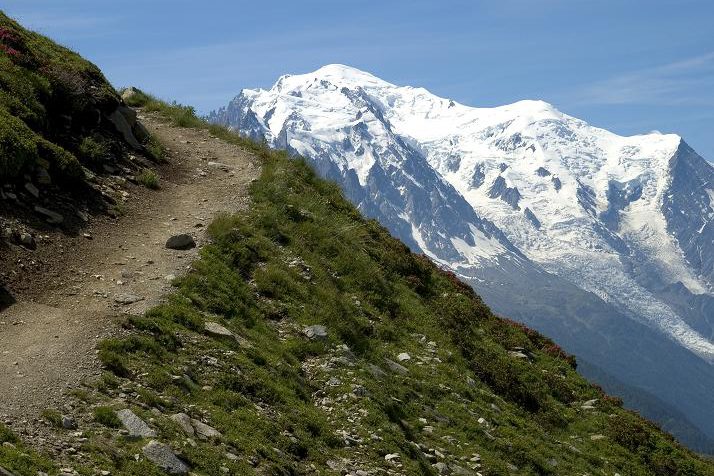Imagine that you are living in a small village, hidden deep in a valley somewhere in a land far away. Let’s say that this rural village is a quite primitive society. You don’t have any telephones or computers.
We’ll even, heaven forbid, say that you don’t know what iPods are.
Shocking, right?!
Anyways, you are a villager here. You work hard all day in the fields, just like everybody else. But… there is one special thing about this village.
You have a dance.
A special dance that your people have been doing for ages. Your great grandmother’s great grandmother even did it when she was a girl. Nobody really knows who invented it, all you know is that it is a tradition. And staying true to the tradition, you do the dance every night – around a big fire along with the rest of the villagers.
It’s great.
Let’s call this dance Etarak.
(Yes, I seriously need to work on my imagination).
The dance, Etarak, is done in weird traditional clothes. You also do these advanced – somewhat dangerous –movements, while you chant a bunch of old mysterious words.
Now, one day, while you’re working in the fields, you hear some astonishing news.
A couple of other villagers have travelled to the big city, to the civilization, to spread your Etarak dance to the rest of the country! They believe that practising Etarak would benefit everyone, and perhaps put your tiny village on the map.
And sure, why not? ”A great dance like Etarak shouldn’t be hidden in some secret village” you say to the others, but actually you think it’s a foolish idea. You’re laughing on the inside.
”Why would anybody else want to learn Etarak? They have their own dances in the big cities, they don’t need it. And besides, they don’t understand it! Well, I guess we’ll just have to see…” you think for yourself.
So imagine the look on your face, when a couple of years later, some of these villagers come back to your village – telling you what a great success Etarak has become in the rest of the country!
Everyone is eager to learn it, so they even had to modernize it.
”Upgrade it a little” was the phrase.
And they show you. All of the advanced movements were gone. Replaced with very basic movements, so that ”Etarak is more safe to practise for everyone”. And the clothes! The clothes have been changed. Now you are supposed to be wearing these strange jackets, ”So that everyone can be more on the same level, you know?”.
Your friends are trying to convince you, but the they’re having a hard time. ”Okay, so the moves have been simplified, and the clothes have evolved. What else?” you ask.
”Well… then there’s the name. We decided that it should be changed to ’Odetarak’, because it’s better in many ways. Oh, and then we introduced competition too. And a ranking system.”
You are speechless.
”It’s great. Etarak it more popular than ever before. Sorry, I mean Odetarak. The old ways are dying man! Either recognize or step aside, because this is going to be huge!” your friends say.
Leaving you to make a choice.
The end.
And this was the story about how Karate was re-introduced to Okinawa.
Sort of.
You didn’t see that one coming, did you? Or maybe you did. (If you didn’t catch it, Etarak is Karate backwards. I told you I need to work on my imagination!)
Anyhow, the re-introduction of Karate to Okinawa is a chapter in the history of Karate that is not often told. We know that the major introduction of Karate to mainland Japan was done by seven people – Funakoshi Gichin, Mabuni Kenwa, Miyagi Chojun, Chitose Tsuyoshi, Gima Shinken, Toyama Kanken and Motobu Choki.
So far so good.
And then we know that Karatedo exploded, spreading like the bird flu.
(And nobody was more surprised than the Okinawans by this!)
But something that is often overlooked is the fact that this ”new” Karate also spread back to Okinawa! It was, along with its many modifications and modernizations, re-introduced into the Okinawan Karate community.
With various, interesting, results.
But I will not tell you more about how this influenced (read: changed) what everyone today thinks is ”Traditional Okinawan Karate”. Instead, I will tell you about a friend of mine who really embodies this whole thing. You could say that he is a product, a direct result, of the re-introduction of Karate to Okinawa.
Hopefully, you will be able to draw some smart conclusions for yourself when you’ve read about him.
To begin with, this friend of mine exists in real life. Yes, I do have many imaginary friends, but this one I didn’t make up.
His name shall remain anonymous, but for the sake of this story, let’s call him Ushi-kun (he kind of reminds me of a bull, which is ”ushi” in Japanese).
Ushi-kun is a black belt holder in a small Karate dojo in Okinawa. He is one of seven or eight sempai in his dojo. His sensei is a 9th dan black belt. Very famous and respected in Okinawa.
Ushi-kun has had his black belt for a long time, and he might even be a second grade (nidan) black belt. I’ve never cared to ask. But his belt is quite faded.
Ushi-kun is 17 years old.
And I know this might come as a shock for some people. ”A black belt is a great honor that needs to be earned sweating at least twenty gallons of blood, during at least thirty years, enduring hard work and pain, blah blah…”
No.
Wrong.
In Okinawa every other kid has a black belt. It’s nothing fancy. Seven year olds have black belts. It’s, after all, the first grade (”sho”= first, ”dan” = level).
It’s nothing special.
We just think it is.
So, anyway, Ushi-kun trains a lot of Karate. It is definitely a part of his identity. He trains Karate in school (at his high school Karate club), and after school (at the dojo). On weekends too. Every day.
Like all high school kids in Okinawa, Ushi-kun has no hobby or free time. It’s school and school-related activities that make up his life. These activities are mostly sports, and Ushi-kun’s chosen sport is Karate.
Ushi-kun loves to compete.
In fact, if he couldn’t compete, he probably wouldn’t be doing Karate. I think he would be doing baseball like everyone else. Or he would be out chasing girls.
Believe it or not, Ushi-kun is one of the top competitors in his age class in Okinawa. He is constantly either #1 or #2 at the biggest tournaments around, and he occasionally travels to mainland Japan for big tournaments.
In Okinawa, there are only two people that have beaten him.
The first is another sempai at the same dojo (who is one year older than him), and the other is a Uechi-ryu guy. In fact, if you’ve seen my videos from Okinawa, you will probably remember this Uechi-ryu kid.
If not, here’s a video:
To be honest, Ushi-kun doesn’t like this kid at all. In fact, he frequently imitates him, by making his front teeth seem really big, stare like a zombie, and do the same kata that he does (Uechi Seisan) above. It’s hilarious. Every sempai is laughing.
Oh, and one last thing! If you would ever mention to him that you practise Kobudo, Ushi-kun would look at you like you had just farted in public. Then he would go back to playing with his cell phone.
So, now that you know some background info about Ushi-kun, let me tell you two episodes I remember from training with him.
The first one was one night when we were doing kumite.
The training at Ushi-kun’s dojo is always kihon, and then kata. Or, kihon and then kumite. Depending on what the sensei is in the mood for.
When I think about it, I never saw a single arm lock, takedown, strangulation, hook punch, hammerfist, throw, low kick, knee attack, elbow smash or even some kind of grab or hold being taught.
Anyway, this night it was kumite time.
Just like kata training, every move was to be done under the count of the sensei. “Kamaete! Ichi, ni, san…” our jodan mawashi geri, jodan ushiro mawashi geri and jodan ura mawashi geri were flying around.
Ushi-kun is quite short, but being the athlete that he is, he had no trouble kicking me in the head.
Tonights class was extra special, because we were allowed free sparring for ten minutes. And here is where this thing happened. It might not sound like anything special to you, but it clearly was for me, or else I wouldn’t remember it like I do.
”Rei… hajime!” the sensei shouts.
We start bouncing. Ushi-kun is keeping his hands low, just like everyone does. I still don’t know why. And I use it.
I duck a little, feint to the right, and then switch, kicking him with my right foot easily on the top of his head. I did what we call a gyaku mawashi geri. Not a clean hit, but still.
Ushi-kun immediately stops.
His eyes become twice as big.
His jaw drops.
”Oh my god, what have I done?!” I think. “Did I break some golden rule?” My thoughts were cut off by Ushi-kun:
”KARATE?!” Ushi-kun exclaims, while staring at me like he’s just seen a ghost.
”What does he mean?” I remember thinking. Of course I do Karate! I said ”un”, which is ”yes” in informal Japanese.
”KARATE?!” he says again, even more surprised, his eyebrows almost touching the ceiling.
Then he demonstrates the kick I just used on him. A gyaku mawashi geri. He says ”Hontou ni?” which means ”For real?”
He laughs.
I let out a small chuckle or something, and we continue sparring.
Okay, that was the first episode.
Here’s the next one:
One Tuesday evening, before training had started, everyone was warming up by themselves. The sensei had not yet entered the dojo, so people were chatting, stretching and doing some random techniques.
When I entered the dojo, I shouted ”Kombanwa!” just like everyone else, and then started walking to one corner (under the AC!) where I usually stretch a little. During my way there, I passed a mirror, and for some reason, I let out a left jab, right cross, left hook, right uppercut combination.
Very light, you know, just for loosening up.
For fun.
And that’s when I hear somebody laughing behind me.
I turn around, and guess what I see?
Ushi-kun is imitating me, along with some other black belt sempai, and they’re having very fun! I laugh back at them, and throw some more combinations.
So one of them yells ”bokushingu!”
That’s the Japanese pronounciation of “boxing”.
I felt sorry for them.
End of episode two.
Now, judging by these two episodes, what are you supposed to think?
Maybe this doesn’t even say anything to you, but to me it does. And Ushi-kun is not some special case! Oh no. He’s like every normal Karate kid in Okinawa. Except he’s a little better at performing tournament kata than most.
He is the next generation of what we in the future will refer to as Karate masters
“To a worm in an apple, the world is an apple”, a wise man once said.
This is Okinawan Karate today.



22 Comments